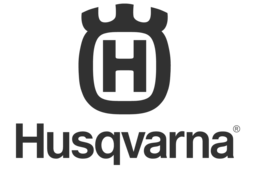We built an automatic hand wash timer that helps us wash our hands for 20 seconds – and to keep the habit going.
The device is intended to help us in two ways:
- It blinks for 20 seconds, to remind us for how long we should wash.
- It measures the actual time we spent washing our hands, to help us keep up the habit.
The hand wash timer detects if a person stands in front of the sink and blinks red for 20 seconds. It uses the same technology as the detectors that turn on the lights in public bathrooms. That is: no cameras.
It also uses the sensor to measure how much time the person spends in front of the sink. This data is sent over a wireless Internet of Things (IoT) network to a database. This data can then displayed on a nearby screen so that we can keep up our hand wash habits.
The wireless network technology, which is otherwise used for street light networks, supports thousands of devices, we can have hundreds of hand wash timers in a single building, such as in public bathrooms in office building, airports, or gyms.
We built the first prototype of the hand wash timer with off-the-shelf hardware. Because we used the Thingsquare Internet of Things (IoT) platform, we could build it in less than a day.
Washing your hands is a highly effective way to reduce the spread of viruses and bacteria.
The 20 seconds hand wash
Washing your hands is a highly effective way to reduce the spread of viruses and bacteria. This has been highlighted by the ongoing COVID-19 Corona virus pandemic and the current protective recommendations.
To be effective, a hand wash should be at least 20 seconds long.
But 20 seconds is a long time. Longer than most are used to washing their hands.
This is why we built the hand was tracker: to help us hit that 20 second mark.
How it works
The hand wash tracker uses a passive infra red (PIR) sensor to detect the person standing in front of it. When a person is detected, it starts to blink red for 20 seconds.
The PIR sensor is the same type of sensor that is used in automatic bath room light sensors. It is only able to detect the presence of a person, and can not be used to identify people.
The hand wash tracker also keeps checking if the person still is standing in front of it. The time that the person is in front of the tracker is sent to a database. Since the tracker has no way of identifying the person in front of it so the data is fully anonymous.
The hand wash tracker is built on the Thingsquare IoT platform, which provides a secure foundation for the device. The IoT technology also makes it possible to let the hand wash trackers be fully battery-operated.
The hand wash tracker uses a sub-GHz Internet of Things (IoT) network to collect its data, which allow us to have hundreds to thousands of hand wash trackers in a single location – one for each sink, even in very large buildings.
Because the hand wash trackers are connected through a sub-GHz Internet of Things (IoT) network we can support hundreds to thousands of hand wash trackers in a single location – one for each sink, even in very large buildings.
The backstory
With the COVID-19 Corona virus pandemic spreading across the globe, we wanted to do something – anything that was in our power.
Ideally, we would have wanted to create a network of wireless sensors that could track the COVID-19 virus, but there are no such sensors available yet. There is ongoing research on this topic, which is highly interesting, but in its early stages.
We realized that we could address the one of the most important activities that people could do to help reduce the spread: washing hands. So we built the hand wash sensor and timer.
To demonstrate and test the concept of the hand wash tracker we built a concept prototype with off-the-shelf hardware and the Thingsquare IoT platform.
The hardware is a LPSTK with a passive IR sensor connected to its input pins and a red LED connected to an output pin. Because we used off-the-shelf hardware and an existing IoT platform, we could build the first prototype in a single day.
For the first prototype, we placed a LPSTK in a black plastic box where we mounted a PIR sensor. To make room for the LPSTK sub-GHz antenna, we drilled a hole through the black box.
The LPSTK runs the hand wash logic on it’s CC1352R System-on-a-Chip, which also runs the sub-GHz mesh network. The mesh network transmits the measured hand wash time to the Thingsquare backend. The data is then made available via the REST API, from where it can be fetched for further processing.
In this case, we do not do any additional processing on the data. Instead, we present the data in an HTML5 interface that we can run either on a mobile app, web page, or a local display.
Conclusions
We wanted to do what we can to help reduce the spread of the current COVID-19 pandemic. Hand washing is one of the most widely recommended actions that everyone can take to help reduce the spread of the virus, so we designed a device to help washing hands.
The device is very recently designed and built and is not currently commercially available.
 By Adam Dunkels, Thingsquare CEO
By Adam Dunkels, Thingsquare CEO








